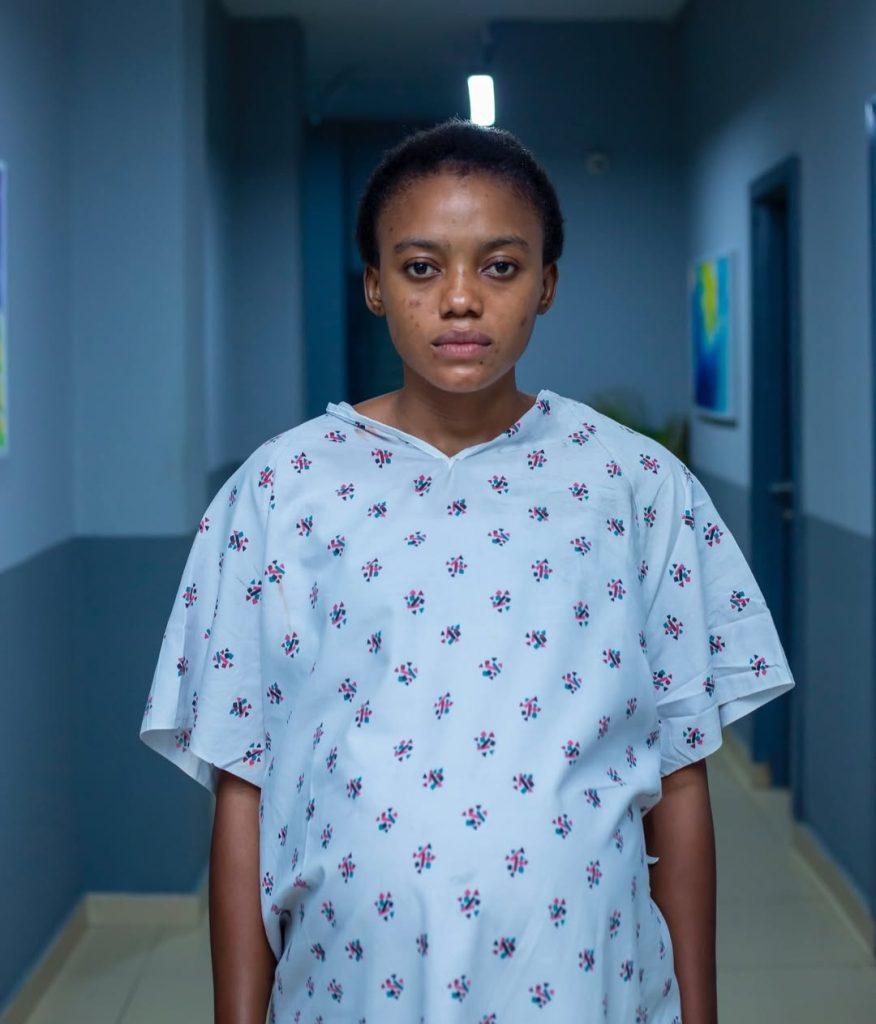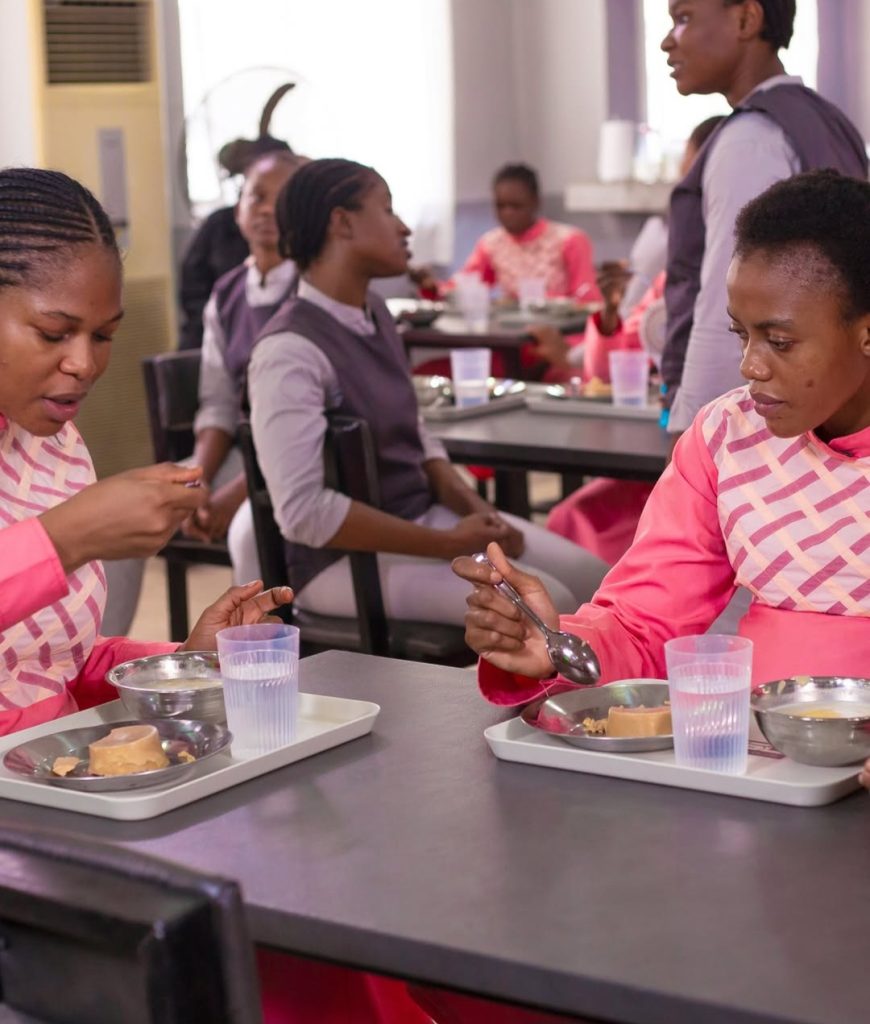Watching Baby Farm, the gripping Nigerian thriller directed by Mo Abudu, I couldn’t help but be overwhelmed by the complexity of its story, the haunting performances, and the raw portrayal of human trafficking that’s far too often overlooked. The movie tackles a sensitive and heart-wrenching issue—the dark world of baby factories. These illegal businesses that operate under the guise of orphanages or maternity homes, exploiting young women and selling their babies to the highest bidders, are real and terrifying. As I watched, my mind raced with thoughts, emotions, and reflections on the film’s disturbing revelations.
Here are 12 of those thoughts, broken down as I journeyed through the chilling and suspenseful narrative:
1. The Story’s Relatable Yet Heartbreaking Premise
The film opens with the introduction of Adanna, a young, pregnant woman who falls victim to a series of unfortunate events—her boyfriend abandons her, leaving her with a shameful pregnancy and nowhere to turn. The setting feels all too real. As a woman, I could feel the desperation of Adanna as she seeks help, only to find herself thrust into an even darker situation. The movie begins with a universal theme—poverty, shame, and desperation—but escalates it into something monstrous. It was gut-wrenching to watch how easily a woman like Adanna could be lured into the clutches of evil, disguised as charity. The stark reality that this could happen to anyone in a vulnerable situation was enough to keep me on edge throughout the film.
African Animation, Iwájú Secures Three Emmy Nominations
2. The Facade of a “Safe Haven”

The Evans Foundation, which initially appears to be a safe haven for young women like Adanna, is an unsettling portrayal of how traffickers often prey on vulnerable populations. The way the clinic is introduced is deceptively benign, presenting itself as a charitable organization offering refuge and help. This dynamic is chilling because it reflects how many trafficking operations disguise themselves behind the mask of good intentions. It made me reflect on how people in desperate situations sometimes blindly trust organizations or individuals who are only looking to exploit their vulnerabilities. The line between a legitimate charity and a trafficker is razor-thin in this world.
3. The Compelling Performances of the Cast
The strength of Baby Farm lies not just in its harrowing subject matter, but in the impeccable performances from the cast. Onyinye Odokoro’s portrayal of Adanna is both haunting and compelling. As a viewer, I could feel her inner turmoil, her pain, and her growing suspicion. The progression of her character—from a hopeful young woman to a trapped, disillusioned captive—was captured beautifully. Genoveva Umeh as Ebun, another victim who resigns herself to the grim reality of the foundation, delivered a stellar performance as well. Her character provides a voice for those who have lost all hope. These performances, paired with Langley Kirkwood and Jenny Stead’s portrayal of the sinister clinic owners, made it impossible to look away from the screen.
4. The Subtle and Disturbing Power Dynamics
Watching the relationships between the women in the Evans Foundation unfold was deeply unsettling. At first, there is a sense of camaraderie between Adanna and Ebun, both desperate for an escape. However, as the harsh realities of captivity and control set in, it becomes clear that the power dynamics within the clinic are oppressive. The women are constantly under threat, manipulated, and even punished for attempting to defy the system. Dr. Evans (Langley Kirkwood) and his wife Barbara (Jenny Stead) exert a sinister and subtle form of control over the women, and it made me think about how traffickers use psychological manipulation as a tool to break their victims’ spirits. The power they wield is not just physical, but deeply emotional and psychological.
5. The Horror of Losing a Child to Traffickers


One of the most shocking aspects of the film is the revelation that the babies born in the foundation are taken from their mothers. The death of Em, Ify’s sister and her fight through the last minute to be with her child us a good example.
Watching Adanna’s journey as she goes into labor, knowing that her child will be taken away from her, was a moment that made my heart ache. The idea of a mother losing her child to trafficking for profit is one of the most horrifying aspects of this entire operation. The emotional trauma that the mothers must go through when they realize they’ll never see their babies again is unimaginable. In this moment, I thought about the deep, irreparable damage that baby factories do—not just to the victims, but to entire families and communities.
6. The Relationship Between Ebun and Adanna
When Adanna first arrives at the Evans Foundation, she is desperate and vulnerable, while Ebun has long since accepted the grim reality of their situation. Initially, Ebun’s resignation to the harsh system makes it easier for Adanna to fall into line, offering a semblance of guidance. Ebun’s quiet acceptance contrasts with Adanna’s fierce determination to escape, holding onto the belief that her life can be different.
For Ebun, the years of abuse and captivity have led her to a survivalist mindset. She has reconciled with her fate, but her kindness towards Adanna reveals a deeper, unspoken need for connection and human warmth. As Adanna’s situation becomes more dire, Ebun’s vulnerability shows that even those who seem to have given up hope are still profoundly affected by their circumstances.
Over time, their relationship evolves from a survival mechanism into a quiet resistance. Adanna, alone and terrified, gradually finds strength in Ebun’s presence, while Ebun, inspired by Adanna’s refusal to give in, begins to rekindle a flicker of hope. Their bond becomes one of mutual support, turning into a form of solidarity that helps them resist the oppressive system around them. Despite the trauma they share, their emotional connection becomes a powerful force in their fight for survival.
In the end, Ebun’s acceptance of the system represents the deep psychological impact of abuse, while Adanna’s defiance offers a reminder that hope can endure, even in the darkest places. Their relationship highlights the importance of human connection, even in the most dire circumstance
7. The Unintentional Worship of Evil by the Public
The film also brilliantly critiques a cultural phenomenon that is tragically prevalent—how people often worship and celebrate figures or groups that they don’t truly know, which can sometimes obscure the evil within these entities. This phenomenon is not just confined to the fictional world of Baby Farm but also reflects a global reality.
Dr. Evans, who runs the so-called Evans Foundation, is a perfect example of this type of figure. On the surface, he presents himself as a compassionate doctor, a benefactor who is concerned with the welfare of young, pregnant women in need. His wife, Barbara, plays a supporting role in this façade, acting as the nurturing figure who offers these vulnerable women a “safe haven” from the harsh realities of the world. In truth, this apparent charity is a mere veil for a horrific operation of child trafficking.
Whether it is a wealthy businessman, a politician, a religious leader, or even a non-profit organization, people tend to celebrate and idolize those who appear to be doing good without delving deeper into the true nature of their actions. The Evans Foundation is a perfect example of how, in desperate times, people will latch onto anything that promises help, even if the true cost is unimaginable.
8. Cherise Uko’s Internal Struggle
The character of Cherise Uko (played by Rita Dominic) presents an interesting moral dilemma. She has endured years of miscarriages and unsuccessful adoption attempts, which has left her desperate for a child. When Barbara offers her twin babies, there is no questioning of where they came from. The decision that Cherise faces, between pursuing her dream of motherhood or choosing the right moral course, is gut-wrenching. Her emotional conflict made me reflect on the way desperation can cloud judgment, even in the most well-intentioned individuals. In the end, Cherise is forced to face the reality of what she is complicit in. Her character arc adds a level of complexity to the story—showing that even the most innocent-seeming characters can be swept up in a system of exploitation.
9. The Death of Joy and Its Impact
The journalist Joy (played by Folu Storms) was an important character in the investigation of the baby farm. She was determined to uncover the truth about the Evans Foundation, but her tragic death marks a turning point in the film. I was shocked by the brutality of her murder, which highlighted the lengths to which Dr. Evans and his associates would go to protect their operation. Joy’s death was a wake-up call for me—she was one of the few characters who sought justice and paid the ultimate price for it. It made me think about the risks that journalists and activists take when they expose the truth about such horrific operations. It also underscored the idea that, in a system built on exploitation, those who seek to dismantle it are often met with violence.
10. The Use of Pidgin, English, and Igbo
The multilingual aspect of Baby Farm is another element that added authenticity to the narrative. The film blends Pidgin, English, and Igbo, which felt very real and natural to me. The characters’ conversations felt grounded in the reality of Nigerian society, where languages often shift depending on the context and the social class of the characters involved. It was a subtle but powerful touch that made the world of Baby Farm feel lived-in and genuine. This linguistic diversity also served to deepen my understanding of the different social strata involved in the story, from the privileged characters like Cherise to the more working-class or street-level figures like Adanna and Ebun.
11. The Desperation of Poverty

While Baby Farm mainly focuses on human trafficking, the film doesn’t shy away from exploring the socio-economic factors that make such exploitation possible. Adanna’s desperation to find her boyfriend and the subsequent choices she makes out of sheer need reminded me of the ways in which poverty can drive people to take risks they might not otherwise consider. Poverty is a key factor that fuels the operation of baby factories, as women like Adanna are often left with no other option but to trust these fraudulent organizations in exchange for shelter, food, and care. It made me think about how much harder it is to break free from cycles of poverty when there are so few opportunities or resources for those in desperate situations.
12. The Sensationalism of News Headlines vs. the Reality of Human Trafficking
The film touches on how easy it is for sensationalized stories of baby trafficking to fade from public consciousness. Baby Farm sheds light on a chilling reality: though there have been numerous headlines in Nigeria about the existence of baby factories, the issue is rarely given the attention it deserves. After watching the film, I found myself questioning how many real-life cases of baby trafficking go unnoticed or are forgotten once the headlines fade away. The film urges us to pay attention to the ongoing fight against human trafficking and to ensure that it is not relegated to a fleeting news cycle. The story of Baby Farm is just one of many that could have been swept under the rug.
13. The Final Confrontation: A Fight for Justice
As the story reaches its climax, the tension reaches a boiling point. The final confrontation between Adanna, Ify, and the Evans Foundation is a powerful and emotional moment. It was incredibly satisfying to see Adanna’s fight for her children and the truth finally come to light, but also terrifying to witness the lengths to which Dr. Evans is willing to go to protect his sinister operation. This was the film’s most dramatic moment, and it left me on the edge of my seat. It was a culmination of everything that had been building throughout the film—desperation, betrayal, hope, and the ultimate fight for justice.
14. The Aftermath and Realization
After the credits rolled, I found myself reflecting on the larger implications of Baby Farm. The film did an incredible job of raising awareness about the real-world problem of baby trafficking. It wasn’t just a movie; it was a call to action. It made me think about the systemic issues that allow these horrors to persist—poverty, corruption, and the exploitation of the most vulnerable in society. While the film ends on a note of justice, the reality for many victims of trafficking is far less certain. The story of Baby Farm is a sobering reminder that the fight against human trafficking is far from over.







